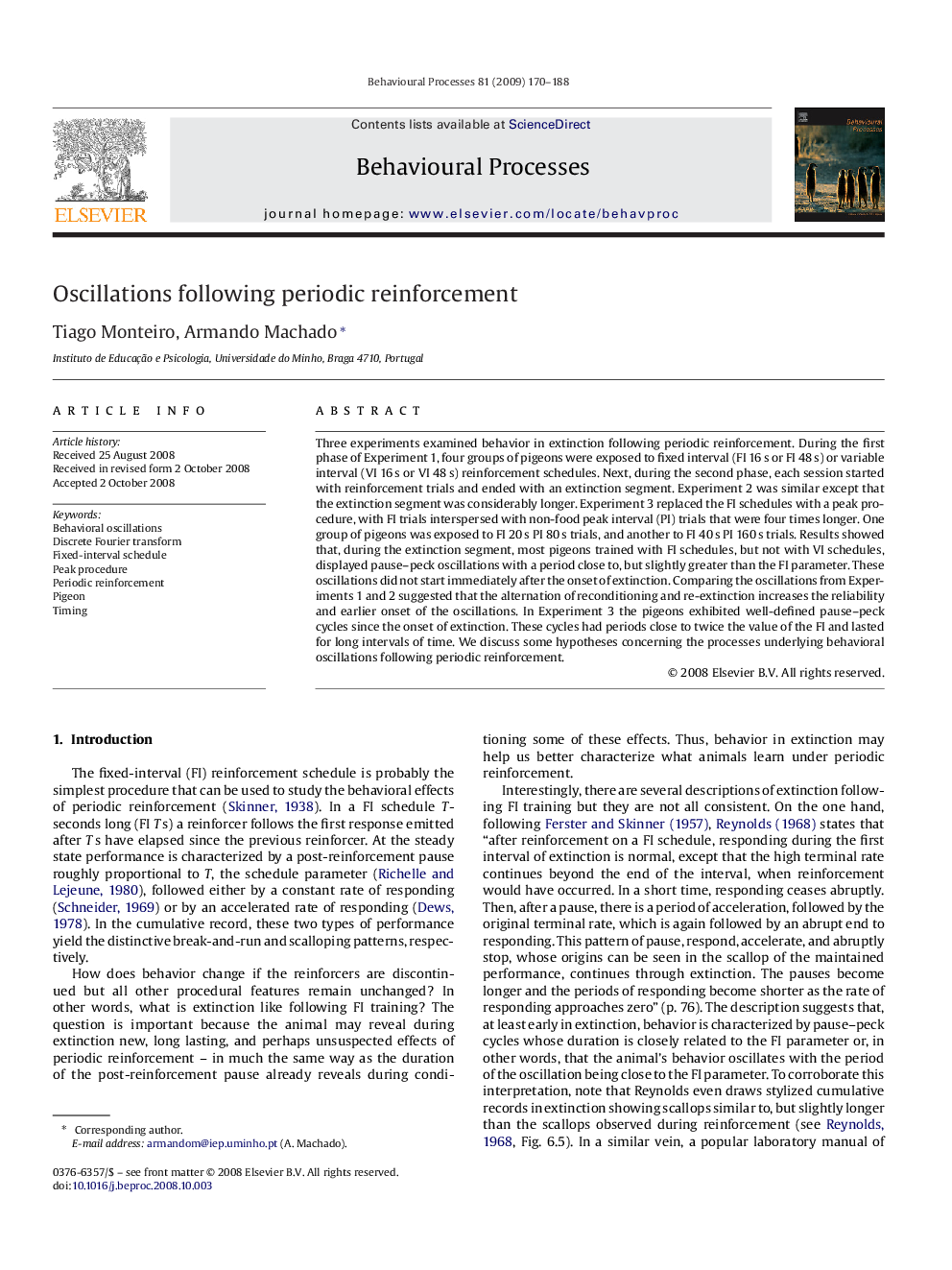| Article ID | Journal | Published Year | Pages | File Type |
|---|---|---|---|---|
| 2427344 | Behavioural Processes | 2009 | 19 Pages |
Three experiments examined behavior in extinction following periodic reinforcement. During the first phase of Experiment 1, four groups of pigeons were exposed to fixed interval (FI 16 s or FI 48 s) or variable interval (VI 16 s or VI 48 s) reinforcement schedules. Next, during the second phase, each session started with reinforcement trials and ended with an extinction segment. Experiment 2 was similar except that the extinction segment was considerably longer. Experiment 3 replaced the FI schedules with a peak procedure, with FI trials interspersed with non-food peak interval (PI) trials that were four times longer. One group of pigeons was exposed to FI 20 s PI 80 s trials, and another to FI 40 s PI 160 s trials. Results showed that, during the extinction segment, most pigeons trained with FI schedules, but not with VI schedules, displayed pause–peck oscillations with a period close to, but slightly greater than the FI parameter. These oscillations did not start immediately after the onset of extinction. Comparing the oscillations from Experiments 1 and 2 suggested that the alternation of reconditioning and re-extinction increases the reliability and earlier onset of the oscillations. In Experiment 3 the pigeons exhibited well-defined pause–peck cycles since the onset of extinction. These cycles had periods close to twice the value of the FI and lasted for long intervals of time. We discuss some hypotheses concerning the processes underlying behavioral oscillations following periodic reinforcement.
